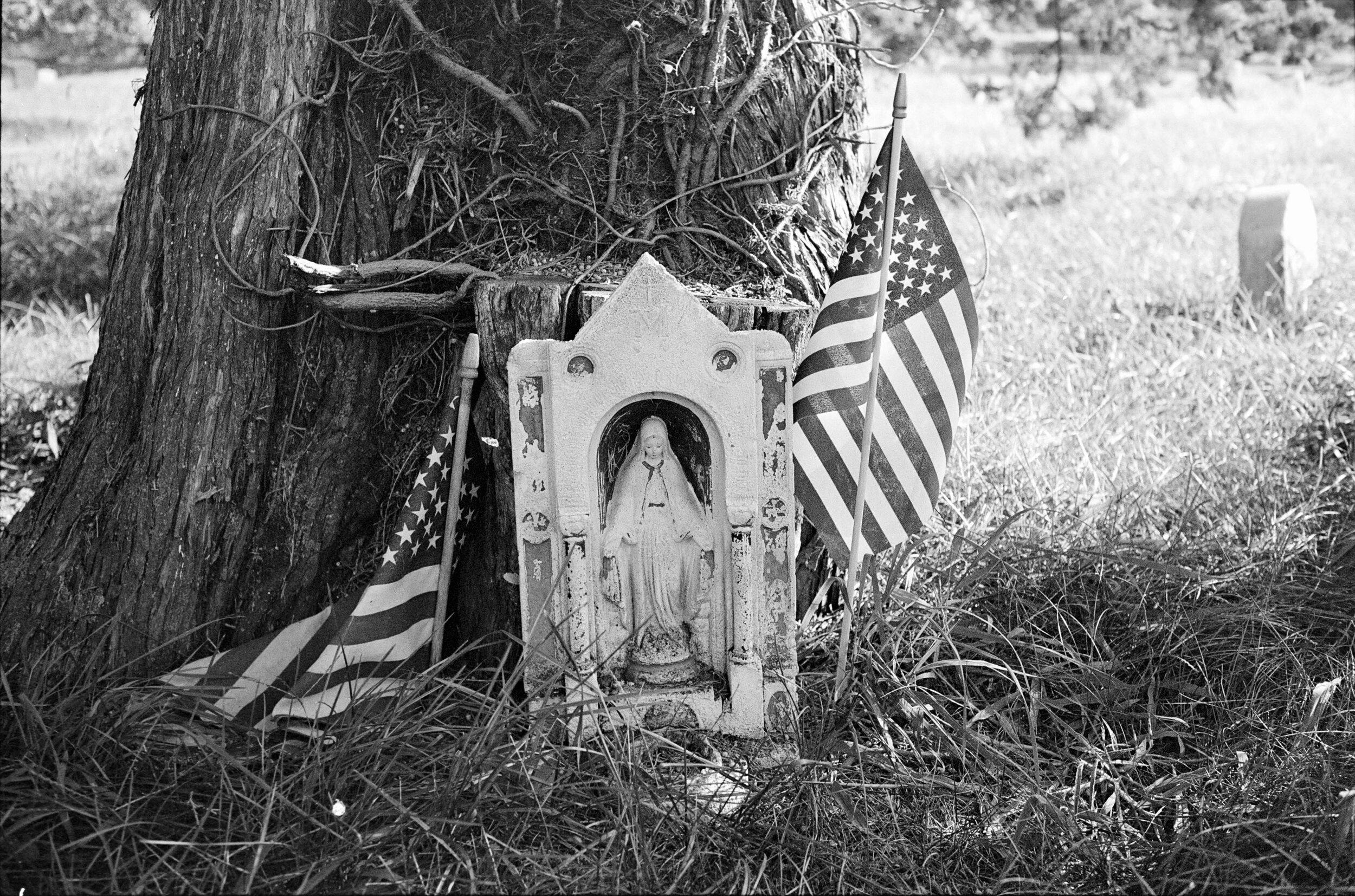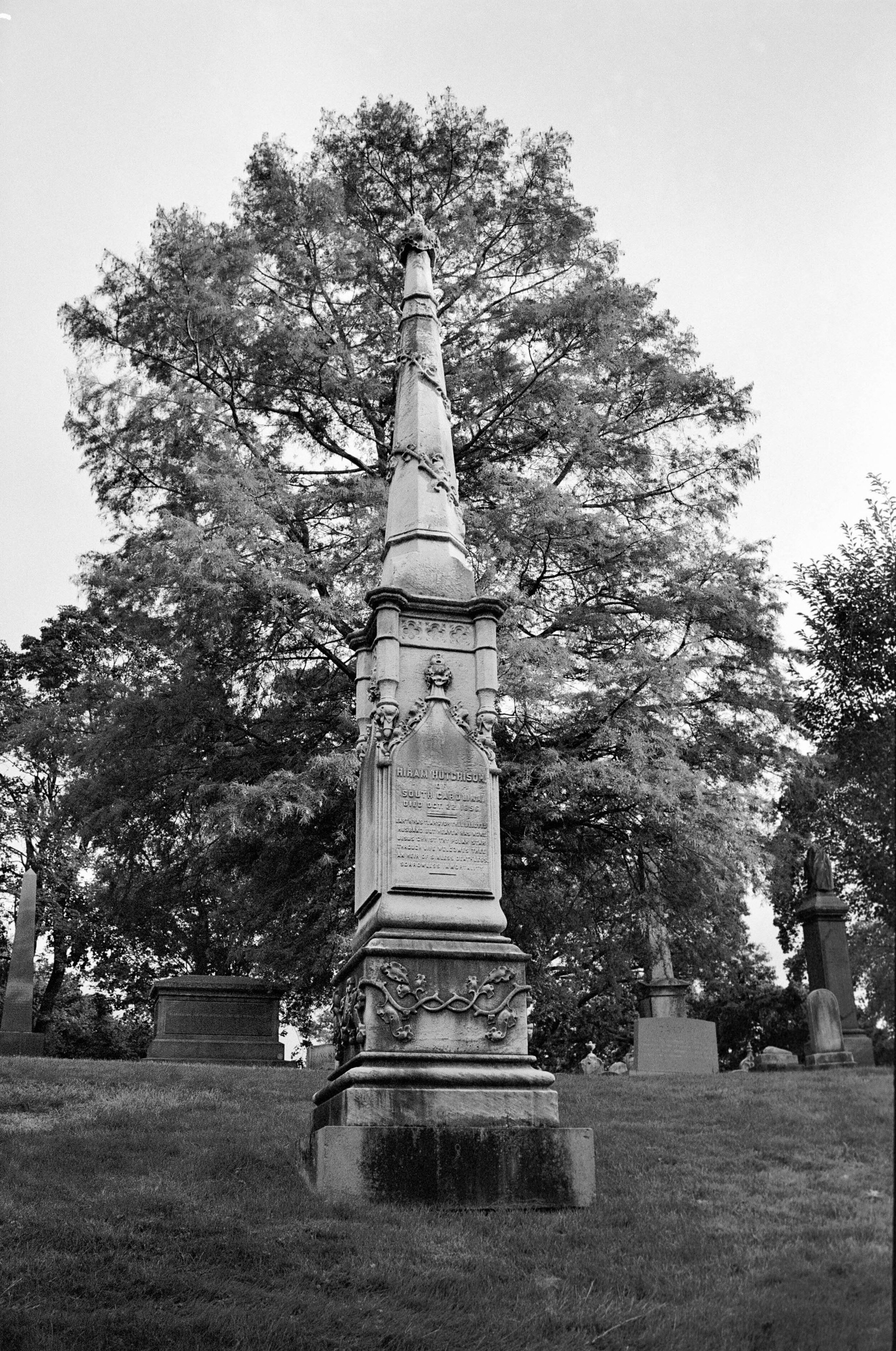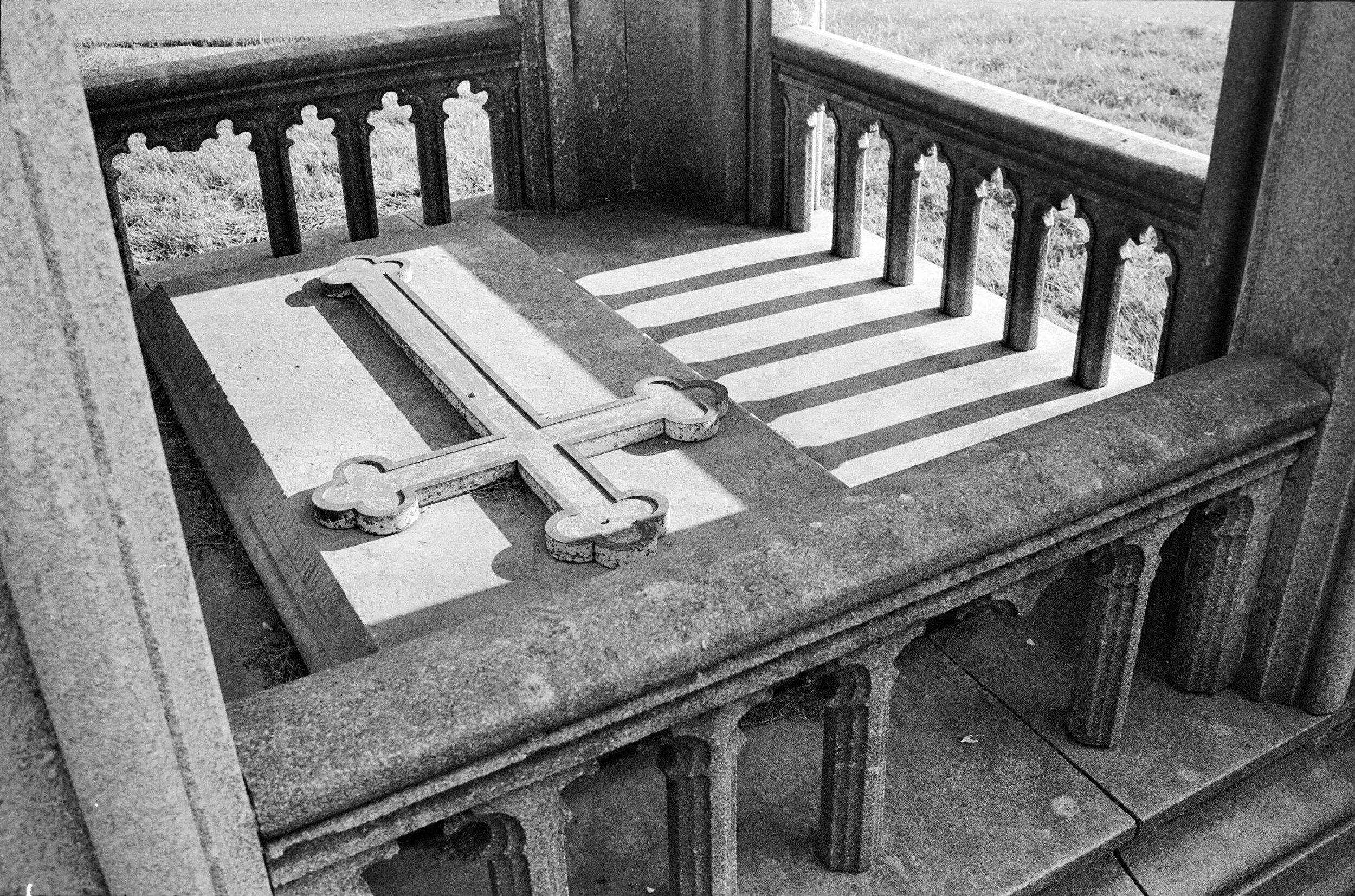Member Spotlight: Ashton Gooding
To kick off the “Member Spotlight” series, CMC sat down with street and editorial photographer, Ashton Gooding. Ashton brings us back to his photography origins during the MySpace era, explains why Garry Winogrand inspires him, and gives us insight into his latest photo project on a famous Brooklyn cemetery.
CMC: How did you get your start in photography?
Ashton: I remember my family having filing cabinets full of printed photos. When I was younger I would sometimes hang out in the closet and just pilfer through the pharmacy prints still in their paper envelope. My parents took pictures all the time, but seemingly did nothing with them other than storing them away. It always seemed to be a shame to not revisit those memories. I started taking photos in highschool around 2007. My friends and I all really started getting into it at the same time. This was before seeing people with a camera around their neck in public as a regular occurrence. We would bring them to school and take them to any gatherings. This was early in the MySpace days, so we really just wanted to chronicle our lives. On the weekends, we would take the train into NYC, form teams, and then compete to capture the best photos.
CMC: How have you been staying creative during the pandemic?
Ashton: At the very beginning of this year and the early stages of the pandemic, I had been going upstairs to my roof almost everyday to take pictures of the clouds. I was furloughed at the time and found many opportunities to go upstairs, bask in the sun, and take the time to think or call someone while watching the clouds endlessly pass by. It felt like therapy and was rather cathartic. It is a habit and practice that I continue to this day.
When I would take socially distant walks outside, I started to delve back into my street photography roots and worked on a series called “Distancing Socially”. The photos depicted safe social interaction in public spaces at the beginning of quarantine. That project was the most thought out and specific work I had done in a long time. It coincided with me taking a class with MOMA and helped to focus and gave me a clear direction when everything felt so uncertain.
Recently, I have found my way back to solitude and have been working on two projects within Green-Wood Cemetery. One involves circumnavigating the vast depths of the grounds and photographing the Obelisks and large scale markers of grave sites. The other project involves a veteran I met in my many trips to the cemetery and following the process of tending to the newly made grave site of his wife who died of Covid in February. The project chronicles the evolution of the site from a daily tended patch of soil to the designed resting place of a loved one.
CMC: Where do you get your inspiration? What and/or who inspires you?
Ashton: Growing up in the 90’s and 2000s, the internet has been vastly inspiring and influential in my style. I grew up using sites like Flickr and following creatives like JJJound and many others on Tumblr. I would find myself just scrolling through endless pages and blogs. I cannot imagine doing that anymore, and the amount of time I spent searching for inspiration is so foreign to me now. I often get ideas from other photographers on Instagram. As cliche as that sounds, I feel like most of the other photo sites have folded into the social media model.
I still often fall back on the tips and tricks I learned when I had taken photography classes, but more often than not, I try to embody the ethos of Garry Winnogrand. I was so impressed by his style and the speed at which he moved through the city. Especially when I am shooting film, I try to remember that it is not a “precious” commodity, but a tool that is loaded into the camera to be used and capture moments. There is no need to conserve. There is no need for hesitation. Then, when I’m done with a roll of film, I detach from my affection for anticipated frames by throwing the roll into a plastic bag full of other completed rolls of film to be later developed at random. I found this to be the most rewarding part of my practice and the most influential mindset I gained from studying Garry. Don’t linger in the moment and live there forever. The world around you continues to move.
CMC: Can you tell us about your favorite project you’ve worked on?
Ashton: I have really been enjoying my survey of the Green-Wood Cemetery grave sites. When I tell people that is where I spend my time on weekends, they are always shocked or initially concerned for someone that’s spending so much time in a graveyard. But I don’t see it like that. To me, it is time to familiarize ourselves with a universal reality. Death can be scary for most, but it is also beautiful and relevant to all of us. It is inescapable and everyone will experience loss. In a way, I find it very nice to commune with those who are no longer with us and pay my respects. The photos are my survey of a time passed when there were no other parks in NYC, and people from Manhattan would travel to Brooklyn to walk in the cemetery, have picnics, take carriage rides, and maybe even see some circus performances. While the circus performances are no longer, it is still a great escape from the busy streets and crowded parks. The quiet atmosphere gives the visitor time to take in the beauty of the landscape, appreciate the design of the carefully constructed stone obelisks and tombstones, while also encouraging exploration of the many paths. Through this project/survey of the land, I hope more people can enjoy the photos of what I find inspiring, but also share in the beauty of a place that deserves a visit to truly appreciate its majesty.




